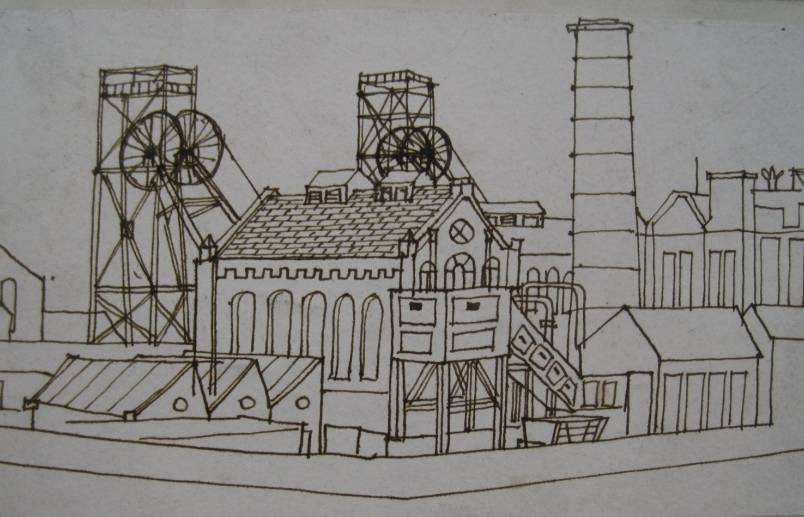PIT STOP
Date Posted: 24th June 2015

Would you like to see what £2.4 million looks like - no not in your hand but in terms of what it can do? A small flat in central London perhaps; a Picasso painting; a few luxury cars; a Scottish Island?
But I mean something everybody can enjoy. You can see it at the beautiful newly renovated Haig Pit by the Percy Kelly Trail from Whitehaven to St Bees. You can’t miss it. It’s black and yellow and still has the winding shaft and headgear which you can see for miles. Haig Pit was the last and the deepest working pit on that coast – it was closed down in 1986 and soon fell into disrepair.
In 1993 it was bought for £1 by the local community, saved by the volunteers who have spent their spare time keeping the machinery in working order and filling it with mining memorabilia. When I’ve called to see how they were getting on in the past, there was always someone friendly, cheerful, dedicated, working away in there on a tiny budget. Now they have their reward. With the award of a £2.4 million lottery grant, the place has been transformed. It now has heritage status. It is protected.
This is good news for those of you walking the trail. The new café and visitors’ centre is on the cliff top by the side of the trail. After the steep climb out of Whitehaven it is perfect for a sit down; to enjoy the view, drinks, sandwiches and ice cream.
Mining was a dirty business and doesn’t sound very interesting but it is well worth taking the time to look around the superb museum across the yard which tells the story of the people who worked in the pit; the lives they led, the dangers they faced on a daily basis and the tragedies of their lives – and they were many. The volunteers are justly proud of their achievement. Tom, our guide yesterday, is an ex miner and made our visit even better with his depth of knowledge and first hand reminiscences. He brought history alive for us in a delightful natural way (Whitehaven accent and colloquialisms thrown in for free!)
In the early sixties when it was still a working pit, you might have seen a man in a corner of the engine room drawing its massive pistons which powered the winding engine. You may have seen him outside drawing the wagons of coal and the winding gear which carried the lift and the men down into the blackness. The management must have turned a blind eye to his presence and the Coal Board were probably unaware they had an artist on their premises. That artist was Percy Kelly. After Percy’s death in 1993 these drawings were among the piles of stuff that came upto Castlegate from his Norfolk cottage. I persuaded Brian, his son and heir, to donate them to the Museum. Some of them are illustrated in the trail brochure. They are in store at the moment but I am now resolved to see if they can be displayed at some point.
This particular trail is packed full of interest and contrasts. Sitting on the cliff top viewing platform at St Bees Head a few miles further on watching Guillemots and Fulmars it is hard to imagine that below us there are narrow underground passages leading way out to sea and the bodies of pit men still trapped down there for ever.
Thank you for all the comments and feedback I've received about the trails. Keep them coming.
